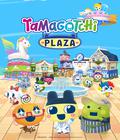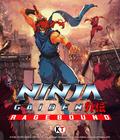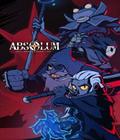Shantae is basically the definition of "the little franchise that could." The original game was a spectacularly good-looking title that was released at the end of the Game Boy Color's life cycle. The series languished for some time before it got a second entry thanks to support from the fans — and then there were third and fourth entries. Shantae has even appeared in Smash Brothers, albeit only in sticker form. Shantae and the Seven Sirens is the fifth game in a franchise that seemed entirely dead in the water when it was released, and it shows that there's still a lot of genie left in this bottle.
Seven Sirens returns to the story of Shantae the half-genie. She and her friends are invited to a competition on a distant island where all of the world's known half-genies are gathering. The competition barely begins before every half-genie — except for Shantae — is mysteriously kidnapped. Now Shantae has to find the missing genies and the culprit in addition to contending with her long-time frenemy, Risky Boots the Pirate, who seems to know more about the island than she lets on.
Seven Sirens doesn't change the formula from the previous games. Once again, you're put in control of Shantae the half-genie as she embarks on a quest. Her controls are simple: run, jump, use her hair as a whip-like melee weapon, and unlock magic spells for more attack options. Her iconic ability to dance returns as well, with four dances being accessible at a button press. One reveals hidden objects, one heals and refreshes both friend and foe, one sends electric shocks that can start machines, and one creates earthquakes that change the environment. All in all, it should feel very familiar to Shantae fans.
The biggest change to Seven Sirens is the new Fusion Magic system, which converts Shante's movement abilities from dances to actions. This is an absurdly good change that I hope they keep. Rather than constantly swapping to a monkey to perform basic platforming, you can now dash (which turns you into a newt who can climb walls) or double-jump (an octopus) or swim (a turtle) at the touch of a button. This makes moving around and exploring so much more fun because it keeps the pacing feeling smooth. Even if the rest of the gameplay is similar to the other games, you'll find this change is one of the franchise's best improvements.
Almost every enemy can drop a Monster Card, and when you collect enough cards, you can equip that card as a power boost. Some cards protect you from spikes or falling damage, some increase the power or speed of your abilities, and some offer passive bonuses (e.g., greater damage with your hair whip or reduce the cost of items). You can only have three equipped at a time, but you can swap them at will. There is a massive gulf in the usefulness of cards, though. Some are game-breaking, like the one that lets you regenerate magic passively, while others are basically worthless, like the one that makes you crawl slightly faster.
Seven Sirens is arguably the most Metroidvania title of the franchise, although the series has always flirted with it. You have a single large map to explore, and you'll eventually unlock abilities that let you reach new areas. There are even warp and save rooms. It's a good feeling for the franchise, and I hope the next one builds upon what the developer has done here. Combined with the awesome new movement tech, it feels like a great Metroidvania-style game for newcomers.
I would say that the biggest issue in Seven Sirens is that it is way too easy. Shantae games aren't particularly punishing, but this one makes it almost impossible to die. Most, if not all, enemies drop a bucketload of consumable health items, and early on in the game, I had a full inventory. In addition, you get access to both an infinite-use healing spell and an invincibility shield. After the second boss, every boss fight devolved into spamming the regular attack button and occasionally popping invincibility for a few seconds.
This also comes into play with Shantae's dances, which can also serve as attacks that are better than a regular attack against anything that isn't a boss. Refresh magic can instantly kill (or un-kill) most types of spooky ghost enemies, while Quake and Shock both effectively clear rooms for a small pittance of your magic. There's a late-game enemy rush that boils down to using your dances again and again, and it feels super dull to rewatch the dance animation a dozen times in a row. Metroidvania titles aren't soul-crushing, but even by those standards, Shantae is one of the easier ones.
This is an issue because it makes the latter half of the game feel tremendously repetitive. You get more mobility options, but you have very few chances to actually exercise them. Most platforming challenges are instantly trivialized by the invincibility shield. Shantae is designed as a kid-friendly game, and that's fine, but even for a kid friendly game, it feels too forgiving. A greater restriction on healing items might do wonders.
The second issue is that for a kid-friendly game, Shantae is risqué. This is something the franchise is known for, but pretty much every notable character is an incredibly scantily clad girl who makes jokes about how little they're wearing. The animated cut scene camera angles seem to favor certain areas. It's not raunchy, but it is the sort of thing I'd feel awkward giving to a younger player who otherwise would fall directly into Shantae's wheelhouse. The game never veers too heavily into straight-up sexual territory, and the rest of the story and presentation are 100% kid-friendly.
Shantae is a visual delight. Since the first game on the Game Boy Color, the developers have made an effort to have the franchise shine with brightly colored, well animated sprites and environments, and this entry is no different. Seven Sirens is a bright and sunny title filled with amusing little touches. (If you heal a mummy enemy, it transforms into a humanoid character and slouches off, embarrassed.) The environments can feel a bit redundant at times, but there's enough variety to keep you interested. The soundtrack is fantastic and contains many excellent tracks. The voice acting is pure Saturday morning cheese, but that absolutely fits the franchise to a T.
All in all, Shantae and the Seven Sirens is a well-made and enjoyable addition to the franchise. The gameplay is stronger than ever, and it retains pretty much everything the series was known for, both good and bad. The only thing that makes it difficult to recommend is the low difficulty level, but if you don't mind an easy time, then it will do the job nicely. Wayforward has shown increasing confidence and capabilities with each passing Shantae game, and Seven Sirens gives me a lot of hope for its next one.
Score: 8.0/10
More articles about Shantae and the Seven Sirens











 Shantae and the Seven Sirens sends the belly-dancing, hair-whipping, half-genie hero to a tropical island where Shantae and her friends encounter other Half-Genie allies, but they soon learn there's trouble in paradise.
Shantae and the Seven Sirens sends the belly-dancing, hair-whipping, half-genie hero to a tropical island where Shantae and her friends encounter other Half-Genie allies, but they soon learn there's trouble in paradise.














